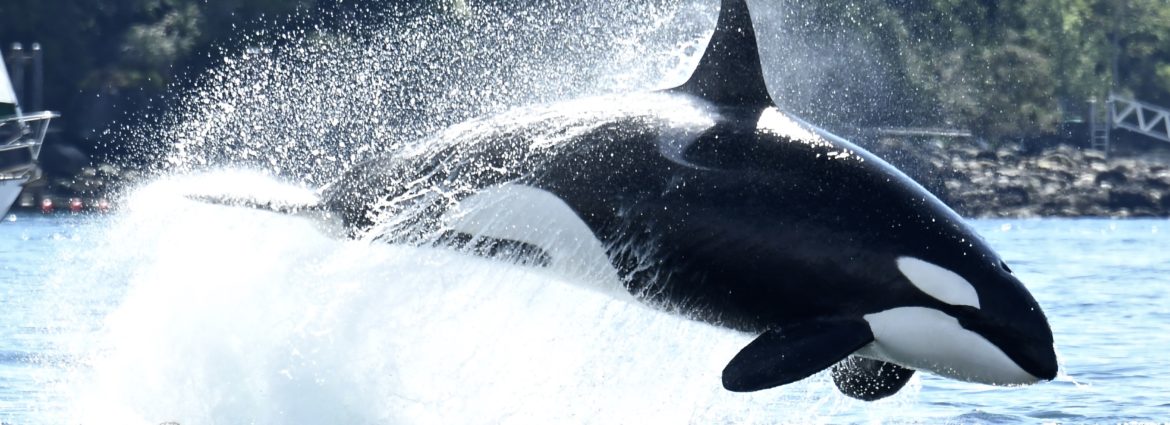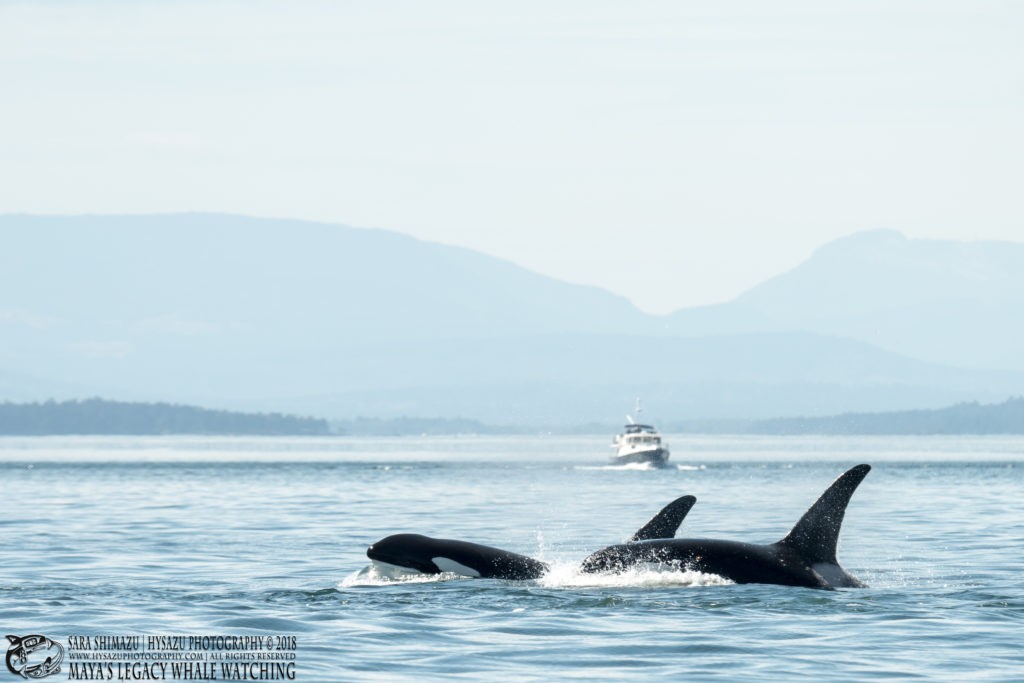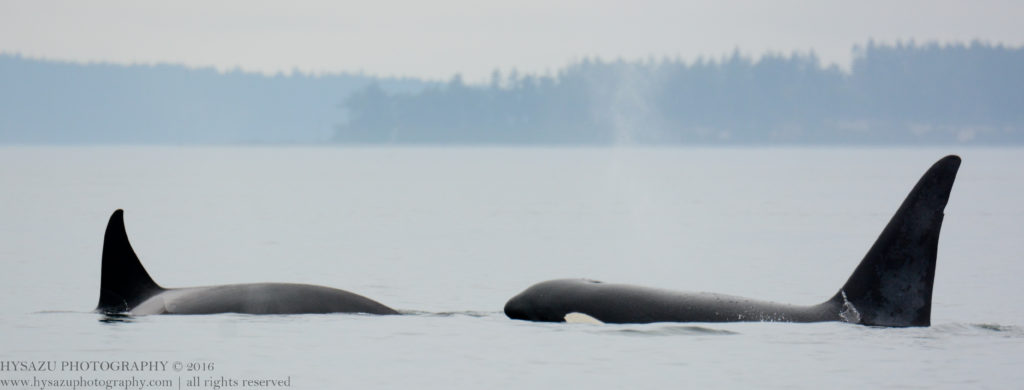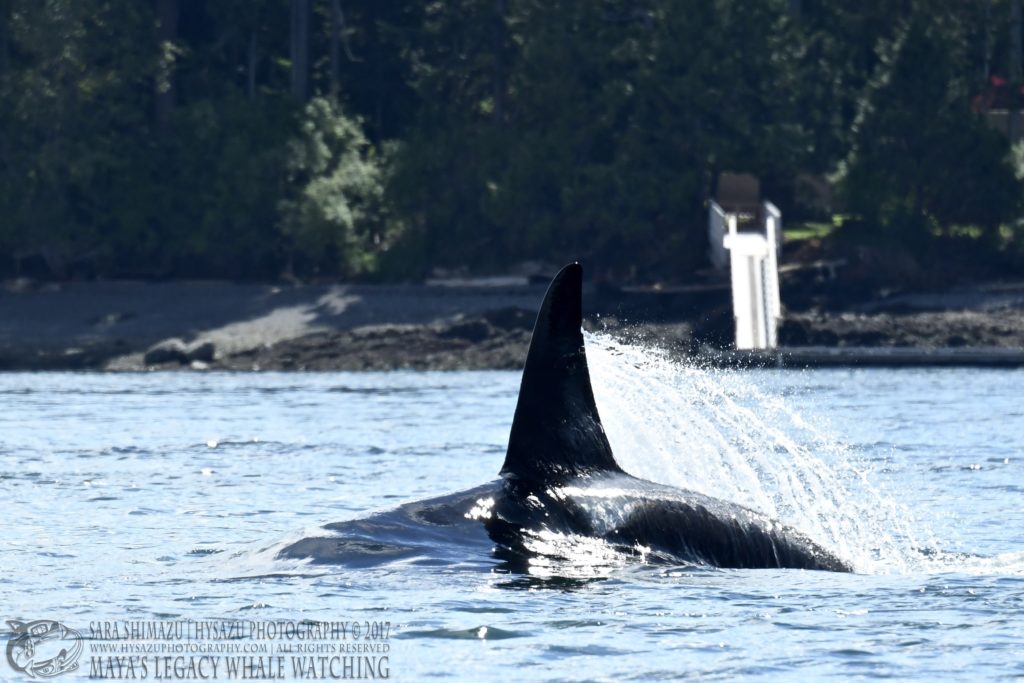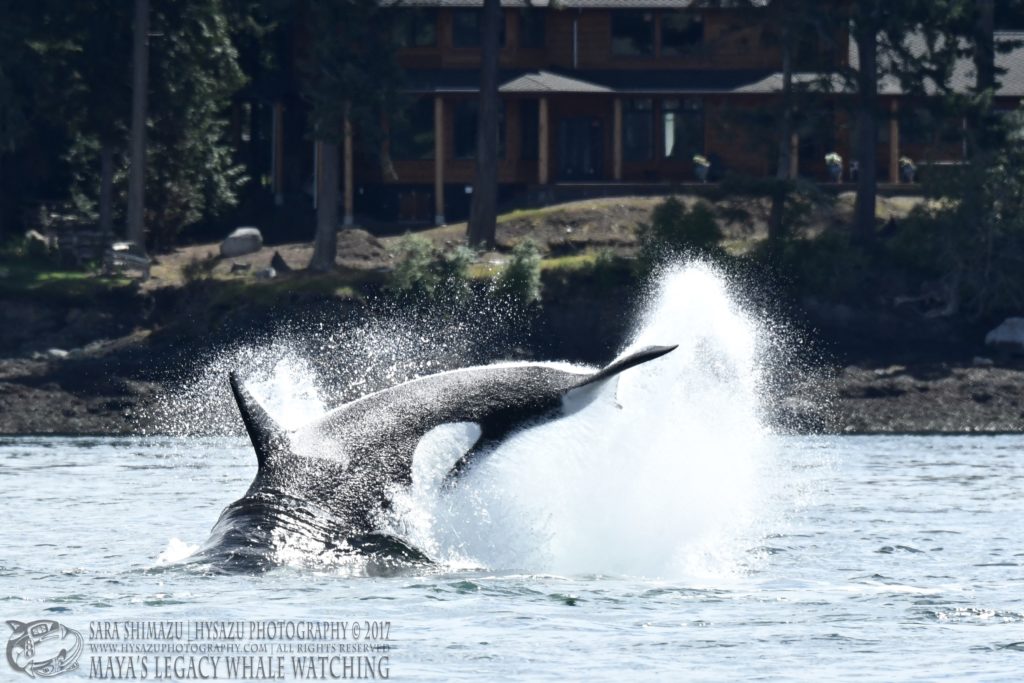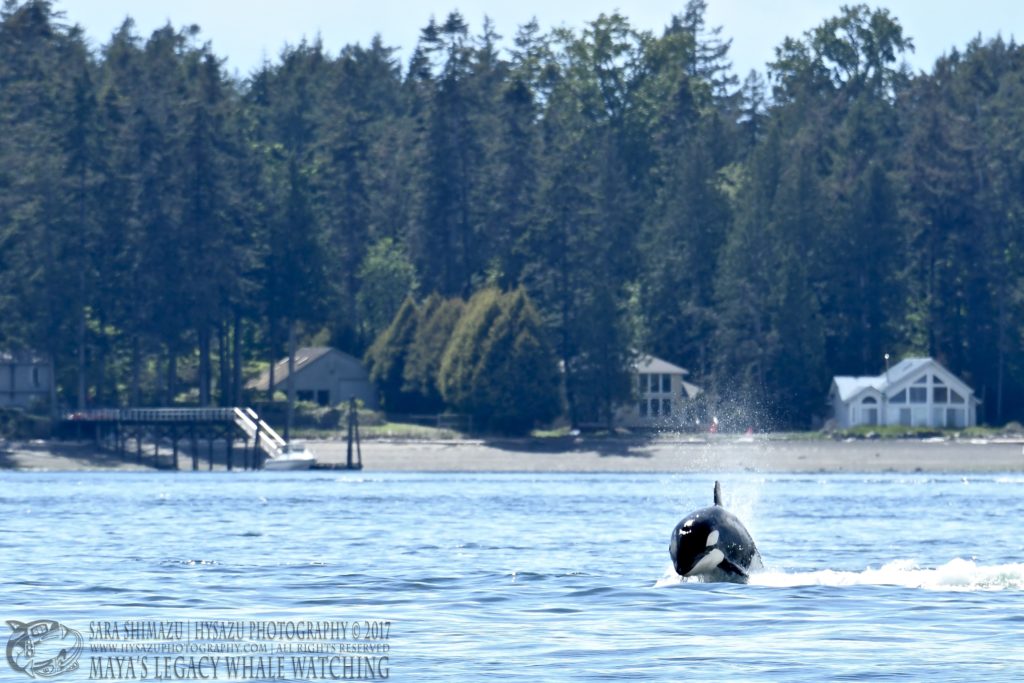
A Trio of Transient Orcas
One family of Bigg’s killer whales (also known as “transients”) has been frequenting the Salish Sea this spring and we’ve been lucky enough to see them on several of our whale watching tours over the past several weeks. The family is a trio of whales known as the T123s, which includes T123 “Sidney”, her 18-year old son T123A “Stanley”, and her 6-year old daughter T123C “Lucky”.
Though they are a small family they are efficient and sometimes enthusiastic hunters—Sidney has been seen launching herself completely out of the water in pursuit of Steller sea lions and porpoise. They are often seen traveling with a variety of other Bigg's orca matrilines, including the T36As and T100s to name just a couple.
A “Lucky” Escape
In 2011 Sidney and Stanley were hunting seals near Prince Rupert, BC when they stranded on a sandbar as the tide receded. Video of the T123's stranded is posted on the internet and they were attended by locals until the tide came back in and the two were able to swim away. Unknown to observers at the time Sidney was pregnant and would go on to give birth to Lucky. It certainly is lucky that Sidney and Stanley both survived and that with her being out of the water for so long, which puts incredible pressure on their internal organs, that Lucky survived as well!
An Orca Family of Three
This family seems small to many people who join us but historically this was a typical group size for Bigg’s killer whales in the Salish Sea. While their fish-eating cousins, the Southern Resident killer whales, travel in large pods the marine mammal-eating whales travel in smaller matrilineal groups. When we think about what they eat, the different group sizes make sense. The Bigg’s killer whales feed on marine mammals that can hear in the water and therefore the whales have to be constantly aware of their own sound. They use stealth to surprise their prey and the quieter they are the more likely they are to be successful in their hunts. Fewer whales are more inconspicuous than many.
However, in recent years the populations of the primary prey species for these whales have been on the increase. With those populations doing well we’ve been seeing larger congregations of Bigg’s killer whales. Multiple families are often seen together and the average size of groups encountered seems to be increasing. It’s important to note that with ample food supplies these whales are spending more time together, seem to be more social and are successfully breeding. We are privileged to encounter two ecotypes of orcas on our tours and we can learn much about how to help one population from viewing the other.
We are looking forward to seeing the T123's more this season and hope you can join one of our whale watching tours from either downtown Friday Harbor or Snug Harbor Resort, on the west side of San Juan Island. Please call 360-378-7996 or email us for availability and departure times.


